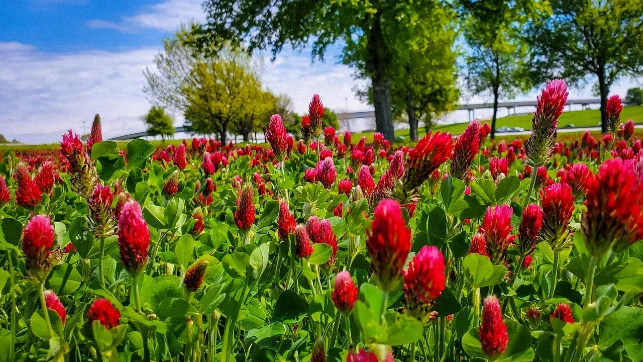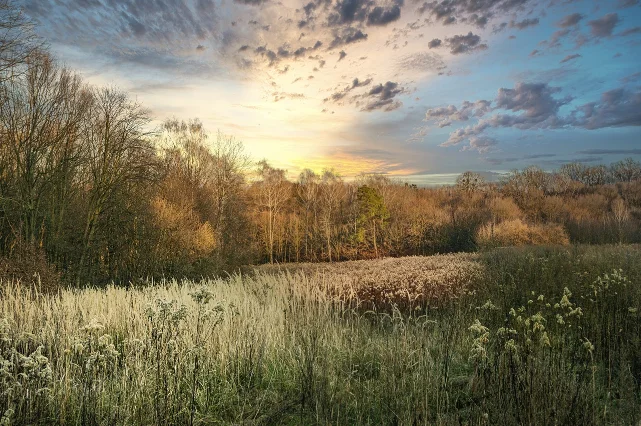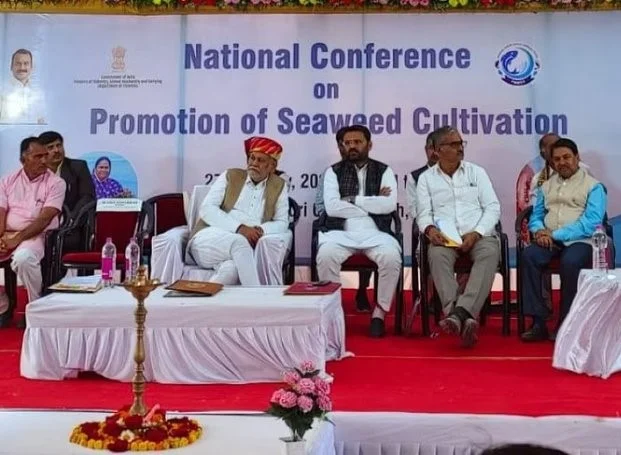Cover crops, also known as green manure or living mulch, represent a foundational component of regenerative agricultural systems worldwide. Their significance lies not merely in their green foliage, but in the multifaceted roles they play in fostering soil health, biodiversity, and ecological balance.
At its core, a cover crop can be defined as any non-cash crop intentionally planted to provide cover and enrich the soil during periods when primary crops are not actively growing. Unlike traditional crops destined for market, cover crops serve as guardians of the land, protecting it from the erosive forces of wind and water, while simultaneously bestowing upon it a myriad of benefits.
The Multifaceted Benefits of Cover Crops
Cover crops, often lauded as nature’s own guardians of agricultural sustainability, bestow a plethora of benefits upon the soil and the ecosystem it sustains. From fortifying soil health to fostering biodiversity, the advantages of integrating cover crops into agricultural systems are manifold and profound.
- Inexpensive Soil Nitrogen Addition:
- Among the most esteemed attributes of cover crops is their ability to harness atmospheric nitrogen through symbiotic relationships with nitrogen-fixing bacteria. Leguminous cover crops, such as clover and vetch, possess specialized nodules on their roots where these bacteria reside. Through a process known as nitrogen fixation, these cover crops convert atmospheric nitrogen into a form that is readily accessible to subsequent crops, thereby reducing the need for costly nitrogen fertilizers.
- Boosting Soil Organic Matter:
- Cover crops serve as dynamic contributors to soil organic matter, enriching the earth with a bounty of decomposable plant material. As cover crops decompose, they infuse the soil with essential carbon compounds, fostering microbial activity and enhancing soil fertility over time. This augmentation of soil organic matter not only improves soil structure but also enhances its water-holding capacity and nutrient retention capabilities.
- Weed Suppression:
- A veritable bulwark against encroaching weeds, cover crops exude allelopathic compounds that inhibit weed germination and growth. By smothering weeds with their luxuriant foliage and outcompeting them for sunlight, water, and nutrients, cover crops serve as natural weed suppressants, reducing the need for herbicides and mechanical weed control methods.
- Improving Soil Structure and Microbial Activity:
- The intricate root systems of cover crops permeate the soil, imbuing it with newfound vigor and vitality. These roots aerate the soil, enhancing its porosity and promoting water infiltration and drainage. Moreover, they serve as conduits for beneficial soil microorganisms, fostering symbiotic relationships that facilitate nutrient cycling and bolster soil health.
- Erosion Prevention:
- In the perennial battle against soil erosion, cover crops stand as steadfast sentinels, safeguarding vulnerable topsoil from the erosive forces of wind and water. Their dense foliage forms a protective blanket that shields the soil from erosion, preventing sediment runoff and preserving the integrity of agricultural landscapes.
- Nutrient Capture and Redistribution:
- Cover crops act as virtuous stewards of nutrients, capturing excess nitrogen and other soluble nutrients that might otherwise leach into groundwater or runoff into nearby water bodies. Through their vigorous root systems, cover crops scavenge nutrients from deeper soil layers, bringing them to the surface where subsequent crops can access them, thus mitigating nutrient loss and enhancing nutrient cycling within the ecosystem.
- Subsoil Improvement:
- The robust root systems of cover crops delve deep into the soil, penetrating compacted subsoil layers and ameliorating soil compaction. By loosening dense soil structures and enhancing soil aggregation, cover crops create conduits for water infiltration and root proliferation, enabling subsequent crops to thrive in previously inhospitable environments.
- Harboring Beneficial Insects:
- Numerous studies have demonstrated that cover crops serve as havens for beneficial insects, attracting pollinators, predators, and parasitoids that contribute to pest control and ecosystem resilience. By providing refuge and sustenance to these beneficial organisms, cover crops enhance biodiversity and promote ecological balance within agricultural ecosystems.
Types of Cover Crops
Cover crops encompass a diverse array of plant species, each endowed with unique characteristics and benefits that contribute to the tapestry of sustainable agriculture. From nitrogen-fixing legumes to robust grasses and versatile brassicas, the selection of cover crops offers farmers a palette of options tailored to the specific needs and goals of their agricultural systems.
Legumes:
Leguminous cover crops stand as stalwarts of nitrogen fixation, harnessing atmospheric nitrogen through symbiotic relationships with nitrogen-fixing bacteria housed in specialized nodules on their roots. Among the most revered legume cover crops are:

- Clover: Clover species such as crimson clover (Trifolium incarnatum) and white clover (Trifolium repens) thrive in diverse climates and soil types, enriching the soil with nitrogen while providing valuable ground cover and forage for livestock.

- Peas: Pea cover crops, including field peas (Pisum sativum) and Austrian winter peas (Pisum sativum subsp. arvense), exhibit rapid growth and robust nitrogen-fixing capabilities, making them ideal choices for enhancing soil fertility and suppressing weeds.
- Vetch: Vetch species such as hairy vetch (Vicia villosa) and common vetch (Vicia sativa) are renowned for their tenacious growth habits and nitrogen-fixing prowess. Their sprawling vines and profuse foliage provide excellent ground cover and green manure for subsequent crops.
Grasses:
-
- Grass cover crops exemplify resilience and adaptability, thriving in a variety of climatic conditions and soil types. Grasses are valued for their vigorous root systems, which enhance soil structure and promote nutrient cycling. Some prominent grass cover crops include:
- Rye: Rye (Secale cereale) stands as a preeminent choice for winter cover cropping, germinating rapidly and forming dense root systems that prevent erosion and scavenge nutrients. Its allelopathic properties also contribute to weed suppression in subsequent crops.
- Barley: Barley (Hordeum vulgare) cover crops are prized for their rapid growth and cold tolerance, making them well-suited for fall planting in cooler climates. Barley’s fibrous root system helps break up compacted soils and improve soil aeration.
- Oats: Oats (Avena sativa) are esteemed for their versatility and adaptability, thriving in diverse soil and climatic conditions. Oat cover crops exhibit rapid early-season growth, providing effective weed suppression and soil erosion control while enhancing soil organic matter.
- Grass cover crops exemplify resilience and adaptability, thriving in a variety of climatic conditions and soil types. Grasses are valued for their vigorous root systems, which enhance soil structure and promote nutrient cycling. Some prominent grass cover crops include:
- Brassicas:
- Brassica cover crops, characterized by their robust growth and biofumigation properties, offer unique benefits to agricultural systems. Brassicas exhibit allelopathic effects that suppress weeds and reduce soilborne pathogens, making them valuable additions to crop rotations. Some notable brassica cover crops include:
- Mustard: Mustard cover crops, including yellow mustard (Sinapis alba) and brown mustard (Brassica juncea), are renowned for their biofumigation properties, releasing compounds that suppress soilborne pests and diseases while enriching the soil with organic matter.
- Radishes: Radish cover crops, such as daikon radish (Raphanus sativus var. longipinnatus) and oilseed radish (Raphanus sativus var. oleiformis), feature deep taproots that penetrate compacted soils, improving soil structure and enhancing water infiltration. Radishes also scavenge nutrients and suppress weeds, making them valuable additions to cover crop rotations.
- Brassica cover crops, characterized by their robust growth and biofumigation properties, offer unique benefits to agricultural systems. Brassicas exhibit allelopathic effects that suppress weeds and reduce soilborne pathogens, making them valuable additions to crop rotations. Some notable brassica cover crops include:
Navigating the Selection and Management of Cover Crops in Indian Agriculture
In the diverse agricultural landscapes of India, where the rhythms of the monsoon shape the contours of the land, the judicious selection and management of cover crops play a pivotal role in nurturing soil health, enhancing crop productivity, and fostering agricultural sustainability. As farmers navigate the complexities of climate, soil type, and agronomic goals, strategic considerations guide the integration of cover crops into diverse cropping systems, harmonizing their interactions with cash crops to maximize synergies and mitigate potential conflicts.
- Considerations for Cover Crop Selection in India:
- Climate: India’s vast expanse encompasses a range of climatic zones, from the humid tropics of the south to the arid landscapes of the northwest. Cover crop selection must be tailored to local climatic conditions, with heat-tolerant species favored in tropical regions and cold-hardy varieties preferred in temperate zones.
- Soil Type: India’s diverse soils, ranging from fertile alluvial plains to nutrient-poor lateritic soils, necessitate careful consideration of cover crop species adapted to specific soil types. Leguminous cover crops thrive in nitrogen-deficient soils, while grasses and brassicas excel in heavy clay soils or sandy loams.
- Intended Goals: The selection of cover crops hinges on the intended agronomic goals of the farmer, whether to enhance soil fertility, suppress weeds, control erosion, or improve water infiltration. Multi-species cover crop blends may be employed to achieve multiple objectives simultaneously, harnessing the complementary attributes of diverse plant species.
- Timing of Planting and Termination of Cover Crops in India:
- Monsoon Dynamics: In India, the timing of cover crop planting and termination is intricately linked to the onset and duration of the monsoon season. Cover crops are typically sown at the onset of the monsoon rains, capitalizing on the moisture-rich conditions to promote rapid germination and establishment. Timely termination of cover crops prior to the planting of cash crops ensures optimal nutrient release and prevents competition for water and nutrients.
- Crop Rotation Cycles: Cover crop planting and termination must be synchronized with crop rotation cycles to maximize the benefits of soil conditioning and weed suppression. Short-duration cover crops may be intercropped with cash crops to provide temporary ground cover and green manure, while long-duration cover crops are cultivated during fallow periods to rejuvenate exhausted soils and suppress weed growth.
- Interactions with Cash Crops:
- Complementary Relationships: Cover crops can serve as invaluable allies to cash crop production, enhancing soil fertility, suppressing weeds, and mitigating pest and disease pressure. Leguminous cover crops enrich the soil with nitrogen, reducing the need for synthetic fertilizers and promoting sustainable nutrient cycling. Additionally, cover crops provide habitat and sustenance for beneficial insects and microorganisms, fostering ecosystem resilience and reducing reliance on chemical inputs.
- Potential Interferences: While cover crops offer a multitude of benefits, their interactions with cash crops must be carefully managed to prevent potential interferences. Excessive biomass accumulation from cover crops may inhibit cash crop growth and interfere with planting and harvesting operations. Allelopathic effects from certain cover crop species may also inhibit seed germination and root growth in subsequent crops, necessitating strategic crop rotations and cover crop selection.
Navigating Challenges and Considerations in Cover Crop Integration
As farmers contemplate the integration of cover crops into their agricultural systems, a myriad of challenges and considerations loom large, shaping the feasibility and efficacy of cover crop adoption. From economic constraints to agronomic complexities, addressing these challenges is paramount to unlocking the transformative potential of cover cropping in sustainable agriculture.
- Cost Considerations:
- The economic implications of integrating cover crops into farming systems merit careful scrutiny, as upfront costs and long-term benefits must be weighed against competing priorities. While cover crop seeds and additional inputs may incur initial expenses, the potential cost savings associated with reduced fertilizer, herbicide, and tillage requirements offer compelling incentives for investment. Moreover, long-term gains in soil health, resilience, and crop productivity may outweigh short-term financial considerations, positioning cover crops as strategic investments in the future viability of farming operations.
- Potential Challenges and Management Complexities:
- Despite their myriad benefits, cover crops pose inherent challenges and management complexities that demand strategic planning and adaptive management strategies. Competition with cash crops for water, nutrients, and sunlight represents a primary concern, necessitating judicious cover crop selection, timing, and termination practices to minimize potential interference. Agronomic considerations such as planting density, species selection, and termination methods must be carefully calibrated to optimize the synergies between cover crops and cash crops while mitigating risks of yield losses or management disruptions.
- Additionally, the integration of cover crops into cropping systems may necessitate adjustments to existing farm equipment, labor practices, and pest management strategies, imposing logistical challenges and adaptation costs that must be accounted for in farm planning and decision-making processes.
- Addressing Misconceptions and Common Concerns:
- Misconceptions and common concerns surrounding cover cropping abound, ranging from perceived yield penalties and management burdens to uncertainties regarding agronomic benefits and environmental impacts. By disseminating accurate information, sharing best practices, and showcasing success stories, farmers, extension agents, and agricultural stakeholders can dispel myths and misconceptions, fostering greater awareness and confidence in cover crop adoption.
- Moreover, collaborative research efforts, farmer-led demonstrations, and experiential learning opportunities can provide valuable insights into the practical benefits and challenges of cover cropping, empowering farmers to make informed decisions and adapt cover crop practices to their unique agroecological contexts.









